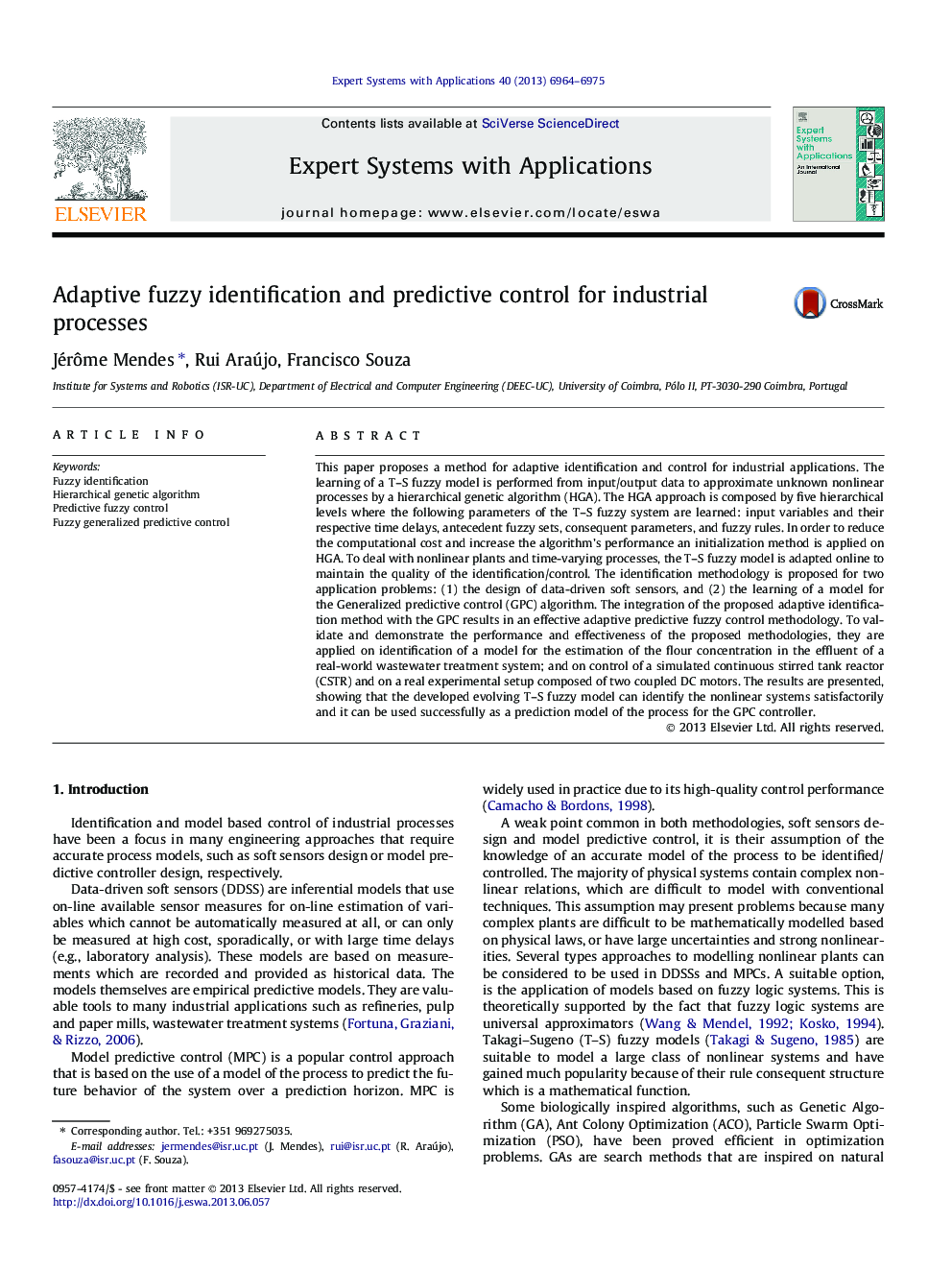| کد مقاله | کد نشریه | سال انتشار | مقاله انگلیسی | نسخه تمام متن |
|---|---|---|---|---|
| 387047 | 660895 | 2013 | 12 صفحه PDF | دانلود رایگان |

• The learning of a T–S fuzzy model is performed from input/output data by hierarchical GAs.
• An initialization method is applied on HGA.
• The learned T–S fuzzy model is used on the GPC algorithm.
• The estimation of the flour concentration in the effluent of a real wastewater treatment.
• The proposed algorithm is applied on a real setup (two coupled DC motors).
This paper proposes a method for adaptive identification and control for industrial applications. The learning of a T–S fuzzy model is performed from input/output data to approximate unknown nonlinear processes by a hierarchical genetic algorithm (HGA). The HGA approach is composed by five hierarchical levels where the following parameters of the T–S fuzzy system are learned: input variables and their respective time delays, antecedent fuzzy sets, consequent parameters, and fuzzy rules. In order to reduce the computational cost and increase the algorithm’s performance an initialization method is applied on HGA. To deal with nonlinear plants and time-varying processes, the T–S fuzzy model is adapted online to maintain the quality of the identification/control. The identification methodology is proposed for two application problems: (1) the design of data-driven soft sensors, and (2) the learning of a model for the Generalized predictive control (GPC) algorithm. The integration of the proposed adaptive identification method with the GPC results in an effective adaptive predictive fuzzy control methodology. To validate and demonstrate the performance and effectiveness of the proposed methodologies, they are applied on identification of a model for the estimation of the flour concentration in the effluent of a real-world wastewater treatment system; and on control of a simulated continuous stirred tank reactor (CSTR) and on a real experimental setup composed of two coupled DC motors. The results are presented, showing that the developed evolving T–S fuzzy model can identify the nonlinear systems satisfactorily and it can be used successfully as a prediction model of the process for the GPC controller.
Journal: Expert Systems with Applications - Volume 40, Issue 17, 1 December 2013, Pages 6964–6975